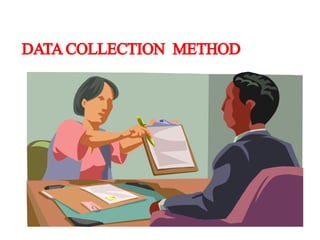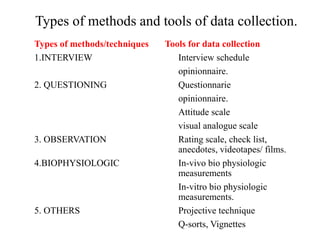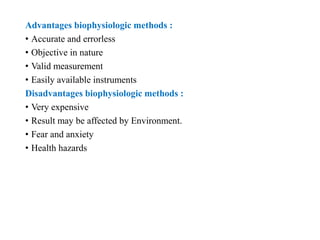This document discusses various methods and tools for collecting data in empirical research. It describes primary and secondary data sources and different types of data collection methods including interviews, questionnaires, observation, and biophysical measurements. Specifically, it provides details on structured, unstructured, and semi-structured interviews. It also explains different types of questions that can be used in questionnaires such as open-ended, closed-ended, rating scales, and Likert scales. Advantages and disadvantages of interviews and questionnaires as data collection methods are highlighted.




















![• Example:
HIV/AIDS
CURE [ 1 ] [ 2 ] [ 3 ] [ 4 ] [ 5 ] [ 6 ] DEATH
NO PUNICHEMENT [ 1 ] [ 2 ] [ 3 ] [ 4 ] [ 5 ] [ 6] PUNISHMENT
NORMAL LIFE [1 ] [2 ] [ 3 ] [ 4 ] [ 5 ] [ 6 ] MISERABLE LIFE](https://image.slidesharecdn.com/datacollectionmethod-200210082514/85/Data-collection-method-21-320.jpg)












